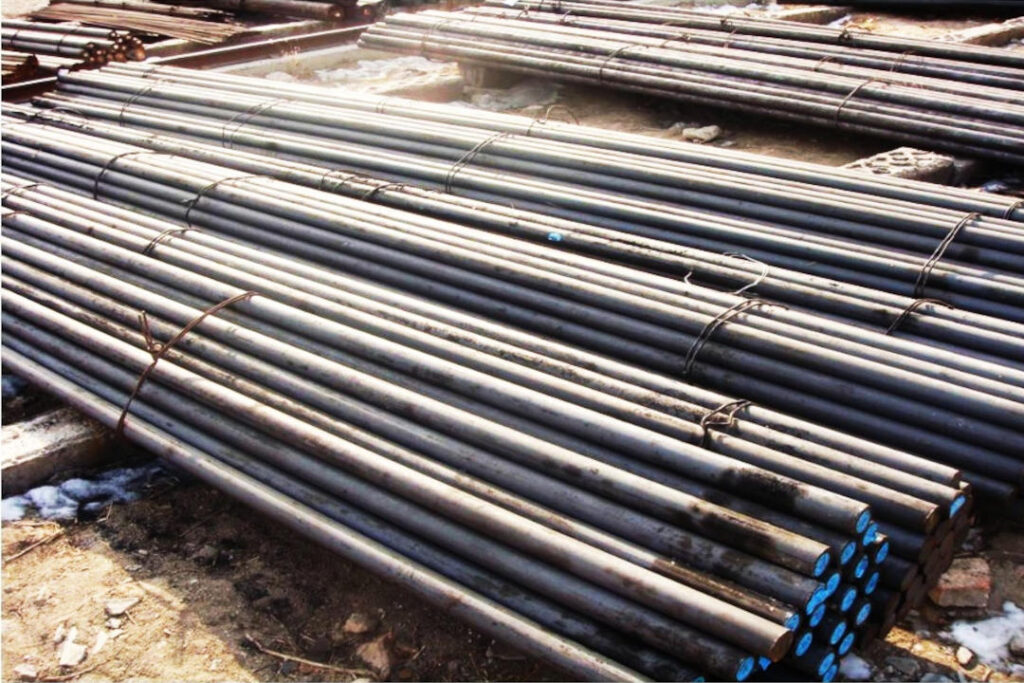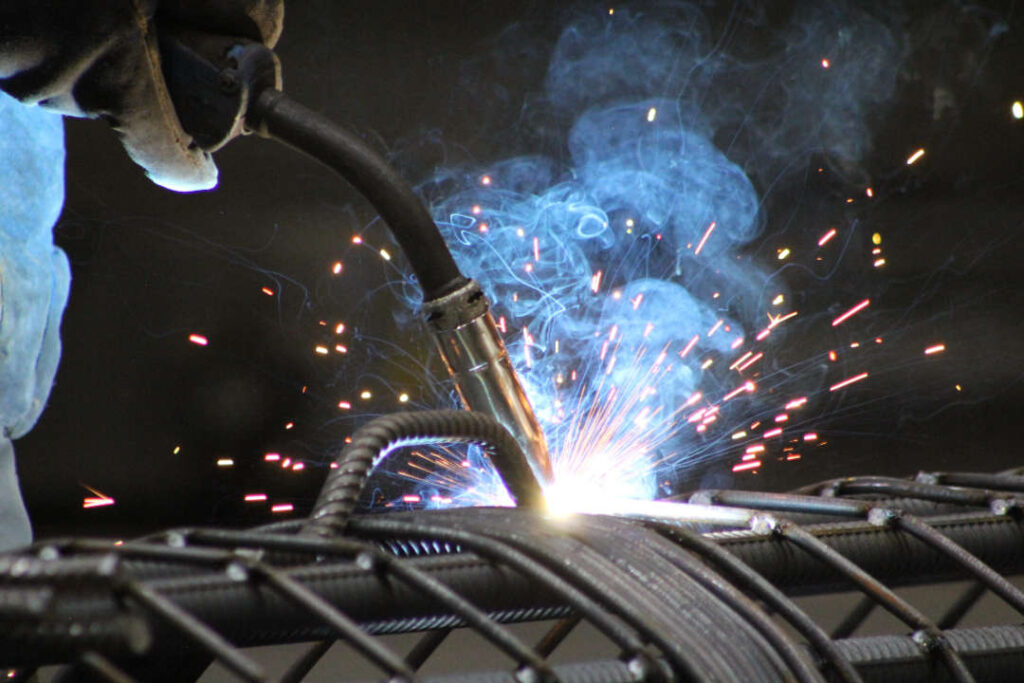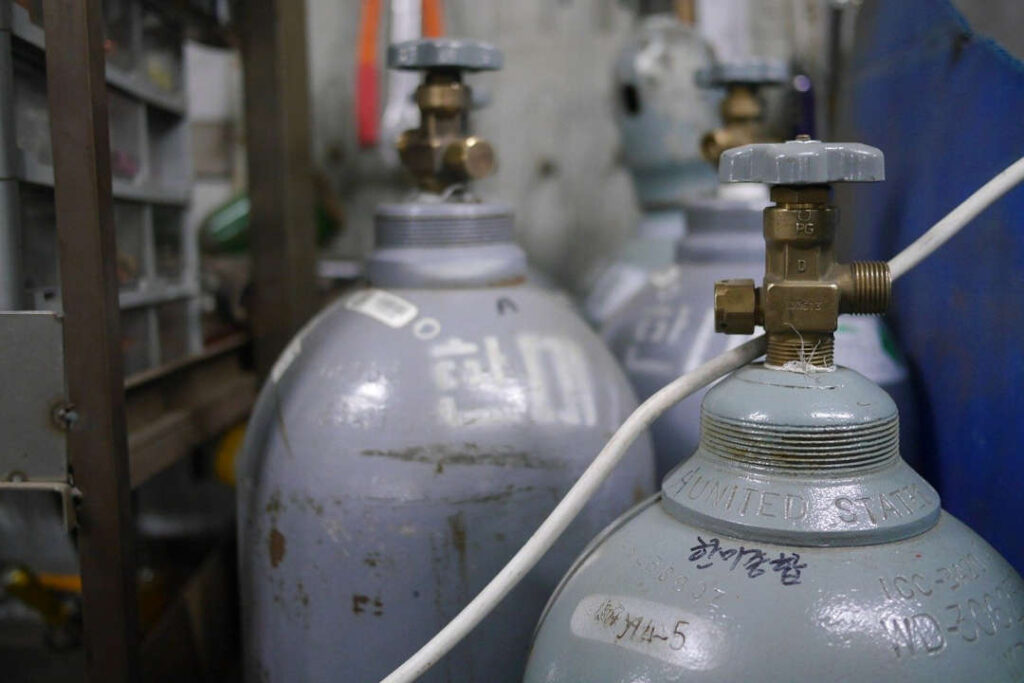What is the Best Shielding Gas for Welding Mild Steel?
What is the best shielding gas for welding mild steel? There are many different ways that you can choose to weld mild steel and with each arc process a different shielding gas is likely to be need. In this article we look at the most common processes used in welding mild steel and assess which i the most appropriate gas to use in each process as well as examining some of the problems and hazards different gases and gas combinations pose.
Shielding the weld

The main task of shielding gases in welding is to provide weld pool protection from from atmospheric influences, such as against oxidation and nitrogen absorption. The weld penetration profile’s features is also affected by the shielding gas used. Thus choosing the correct shielding gas is important.
Because each base material has different properties and weldability, and because different welding processes differ, the shielding gas if different dependent of each of these variables.
With regards the shielding gas for welding mild steel much will depend on which process that you are employing. The two principle welding processes used in welding mild steel are Gas Metal Arc Welding usually referred to as MIG and Gas Tungsten Arc Welding commonly referred to as TIG.
Properties of Mild Steel
Steel grades may be broken down into a few general categories, however there are many distinct forms of steel. Mild steel is one among these, and it has grown in popularity in recent years. Because of its remarkable easy to both weld and machine, among other properties, it has become a popular material for use in construction.

There are two types of mild steel: low carbon (LCC) and high carbon (HCC) sometimes referred to as carbon steel. LCC is used for structural applications such as bridges, buildings, etc., whereas HCC is used for shipbuilding, car bodies, etc. Both have different properties.
Difference between TIG and MIG
TIG welding employs a flame to melt the filler material into the weld pool, while MIG welding uses a wire feeder to add the filler material to the weld puddle. In both circumstances, energy is required to power the process. The procedure employed to add the filler material, on the other hand, is what creates the difference.
MIG welding entails feeding filler metal through the flame and using a shielding gas or flux core wire to stabilise the arc. The primary benefit of MIG welding is its speed and ease of learning. It is often used for welding thicker materials.
The TIG welding process is achieved by heating the metal to be welded using an alternating current. This procedure melts the metal at the wire’s tip and causes it to flow over the surface of the workpiece.

With TIG Welding, to generate the arc, a hand-held tungsten electrode is used. The other hand adds filler metal to the weld puddle. TIG welding has the advantage of providing more control over the welding process and is often very clean. TIG welding is quite similar to gas or oxygen acetylene welding.
Two types of Gases
When looking to decide what is the best shielding gas for welding mild steel we need to consider the gas options available to the different welding processes.
Inert gases react with nothing and have no effect on chemical processes. Active gases are gases that interact chemically with the metal being welded. Carbon dioxide, argon, and helium are examples of these.

Argon (Ag) is an inert gas that is commonly used to protect welds against oxygen contamination. Because they include CO2, argon/CO2 mixtures are classified as active gases. They raise the voltage of the arc by causing electrical conductivity. They release the molten metal pool’s surface tension, enabling it to flow and flatten.
Gas for TIG Welding Mild Steel
Argon is the most often used inert gas in TIG welding processes. Because just a few gases are suitable for TIG welder applications, argon is the gas of choice due to its versatility. Argon in commonly used when TIG welding mild steel
Although you can easily use TIG to weld mild steel it is best suited for thinner materials such as aluminium or stainless steel.
Helium (He) may be added to the weld pool to improve penetration and fluidity. All grades of welding may be done using argon or argon/helium combinations. Nitrogen (N2) and/or hydrogen (H2) may be added to produce specific qualities in certain circumstances. For example, adding hydrogen has a similar, but much greater, impact as adding helium. Hydrogen additives, on the other hand, should not be employed for welding martensitic, duplex or ferritic grades so you would not use hydrogen welding mild steel.
Gas for MIG Welding Mild Steel
The two main gases used when MIG welding Mild steel are Argon/CO2 mix or pure carbon dioxide. The gas chose would depend on the application.
Most metals may be welded using argon or an argon/helium combination. Small amounts of oxygen content or carbon dioxide are often required to stabilise the arc, enhance penetration, and improve fluidity.
Argon/CO2 Mix MIG Welding Mild Steel
The most common shielding gas for home and industrial use is C25, a mix of 75% argon and 25% CO2. It is a versatile gas mix that produces a wide range of weld profiles. The mix has the ability to produce deep penetration without losing surface quality and is usually a good choice for dissimilar welds such as welding stainless to mild steel.
Argon gas is used in the mix often used to protect welds against oxygen. When inhaled in excessive amounts, carbon dioxide may be dangerous.
C25 shielding gas is a semi-inert gas that shields the welder from oxidation and corrosion. It is used to safeguard the welding job against oxidation and corrosion.

On of the main reasons for using C25 gas mix is because it generates welds that are robust and result in flat surfaces. The argon in this gas mix helps stabilize the CO2 mix reduces weld spatter.
MIG welding is perfect for goods requiring a smooth surface finish. If you were welding an engine block, for example, you wouldn’t want the weld bead to be high and rough since it may create complications during machining.
A MIG welding gun is designed to generate a hot arc. The heat causes the metal to melt quickly. To make a solid bond, the molten metal must cool quickly. As a consequence, a MIG welder produces a better weld in less time than other types of welding processe.
MIG Welding Mild Steel with 100% Carbon Dioxide Gas
Despite the fact that carbon dioxide is not an inert gas, making the process MAG rather than MIG, it is often employed as a shielding gas in MIG welding. Because it is a reactive gas, it generates a hotter arc than the C25 combination. As a consequence, the weld produces excessive spatter and requires more cleanup. Use the C25 mix, however, if you want a consistent weld.
To perform properly, carbon dioxide demands greater amperages from the MIG welder.
The weld pool is too cold at low amperage, resulting in limited metal penetration, making it a poor option for welding thinner metal at low amps. For MIG welding mild steel gauges less than 20 gauge, C25 shielding gas is a far better expert option.
Trasfer Mode
Another consideration is the transfer mode that is being used. For example if using short circuit transfer where the wire is “short circuiting” or hitting the base metal numerous times per second as it establishes electrical contact, the the shielding gas Argon ratio is 75 to 85 percent Argon would be used and the welding voltage low. While some spatter is created, this form of transfer may be employed in all welding positions and on all steel thicknesses.
Why it is Important to Use the Right Shielding Gas for MIG (GMAW) When Welding Mild Steel
Some people ask whether a shielding gas containing 98 percent argon and 2% carbon dioxide can be used on mild steel. You may use this gas in theory, but we do not encourage it. Shielding gas does much more than simply keep you safe from oxygen during welding. It also has an impact on the following:
Welding using 98 percent Argon and 2% Hydrogen results in great penetration into the base metal and high-quality welds. However, if the base metal is unclean or polluted by mill scale, rust, or other contaminants, fusing can become difficult.
Welding with argon gas on its own is ineffective compared to welding with argon gas and carbon dioxide mix. Whilst penetration is comparable with both the arc length is shorter with pure argon.
Welding using argon alone though is safe. However, if you are dealing with any other gases, you need to be familiar with them. If you use argon and oxygen, it should be pure argon or argon an oxygen mix.
Hazard of MIG Welding Mild Steel
There are dangers with most welding processes but the combination of MIG welding and mild steel has particularly dangerous emissions in terms of welding fume as well as ultraviolet radiation.
Danger of Ultraviolet radiation emitted in MIG Welding
The choice of gas can have a direct impact on the the level of danger posed by UVR exposure during mild steel MIG welding. Below are a list of the principle causes of ultraviolet radiation danger:
- Higher welding currents are more dangerous than lower welding currents.
- At higher welding currents, using 80 percent Ar + 20 percent CO2 as a shielding gas is more dangerous than using 100 percent CO2.
- Pulsed welding currents are more dangerous than non-pulsed welding currents.
- It looks to be quite dangerous when metal transfer is done via spray. This research shows that unprotected exposure to UVR generated by mild steel with MIG is very dangerous.
What is Welding Fume

In addition to radiation there is also a severe health risk posed by the fumes emitted during the MIG welding process.
Welding fume is a complex combination of gases in the air and tiny particles. The composition of the mixture is determined by the welding procedure and the welded products and the shielding gas used. Gases that are often be released include:
- nitrous oxide (NOx)
- carbon dioxide (CO2)Welding fume particles of 1-7 μm diameter have the ability to penetrate deep into the lungs, constituting the greatest health hazard.
- carbon monoxide (CO)
- shielding gas
- ozone (O3)
When metals are heated past their melting point, they vaporise and condense into fumes, resulting in welding fume. During welding, you may be exposed to a variety of gases, including nitrogen oxides, carbon monoxide, and ozone. Welding fume exposure may result in a variety of adverse health consequences.T
The Workplace Health Expert Committee classed mild steel welding fume as a human carcinogen after the International Agency for Research on Cancer (IARC) released scientific evidence showing exposure to mild steel welding fume may cause lung cancer and perhaps kidney cancer in people.
Conclusion: What is the Best Shielding Gas for Welding Mild Steel?
Clearly determining what is the best shielding gas for welding mild steel depends on numerous factors. The principle one though is the type of welding process to be used.
When choosing the process and then the gas a welder needs also to remain mindful of the hazards, particularly with MIG welding mild steel. Ensuring proper ventilation and UV protection is critical to the long term health of the welder.

I’ve been involved in the welding industry for over twenty years. I trained in various engineering shops working on various projects from small fabrication and repairs through to industrial projects.I specialize in welding aluminum and food grade stainless steel and an now run an engineering shop fabricating equipment for the food industry.